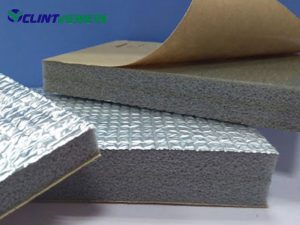What is thermal insulation and its types
When you are in the winter and outdoors, you may feel cold and you will certainly wear more clothes next time so that you can stay warm. But if this happens to you, feeling cold inside the house, what will be your reaction? Do you wear more clothes? Or increase the temperature of your home heating system? What if you were told to eat more to overcome your cold? Do you think it makes sense? Certainly not! Because it only gives you a feeling of warmth for a short time and is not a good method at all. But raising the temperature of your home heating system in exactly the same way does not make sense at all. Because with these actions you can only temporarily clear the face of the issue!
But what is the solution?
Just as you protect your body from the cold in winter with warm clothing, your home needs a special warm clothing called “thermal insulation” to protect it from the heat.
thermal Insulation

You may use different heating systems to keep your home warm in the winter, but you should note that your home is made of stone, iron, wood and soil, and the environment is made of the same materials. Their temperature in winter is lower than the building itself.
Also, as you know, the temperature always goes from warm environments to lower temperature environments. Heat is transferred to other pathways in three ways: transmission, radiation and conduction. So you can prevent heat loss in your home by blocking these methods with thermal insulation.
Common types of thermal insulation
Today, different types of thermal insulation are sold in the market, each of which has advantages and disadvantages. You need to choose and buy the item that is most suitable for you according to your needs.
In the following, we will introduce 5 common thermal insulations.
fiberglass themal insulation :

Fiberglass thermal insulation is widely used in the modern world today. One of the strengths of this insulation is its very low flammability while being low. But one of the most important points that you should pay attention to is how to install this insulation that safety points must be fully observed during installation to avoid possible dangers.
cellulose:

This insulation is very environmentally friendly because it is made of materials such as paper and cardboard. Also, due to its structure, it causes very little damage in fires, and this is one of the strengths of this insulation. But if we want to talk about its weaknesses, because some people may be sensitive to the materials used in it, its use is limited and also there are not many specialists in installing cellulose insulation.
Mineral wool:

If you want to insulate a lot of space, this type of insulation can be a good choice for you. Note that these types of insulation, although not combustible, are not used in high temperature environments because they are not flammable. Types of mineral wool insulation include glass wool, mineral wool and slag wool.
Polyurethane foam:

One of the strengths of this insulation is its fire resistance, weight and low density. Low density allows you to use this insulation by spray method if needed.
Polystyrene thermal insulation:

Polystyrene insulators are waterproof, sound and heat and are divided into two categories: EPS and XEPS, which have many differences in terms of performance and price. Insulation also has a uniform surface that none of the above types had.
Due to the many descriptions of polystyrene insulation, we will try to fully introduce this insulation in a separate article in the future.
You can visit the Clintveneta product store page to get the thermal insulation you need and contact us to buy or get more information.